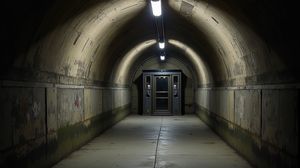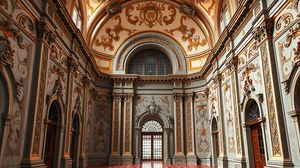
Greenwich Market in London is a vibrant and eclectic mix of stalls and shops nestled in the heart of Greenwich. Open since the 19th century, it has become a cornerstone of the local community and a must-visit destination for tourists. The market operates six days a week and showcases a rich variety of arts, crafts, antiques, and fresh food, reflecting the diverse culture of the area.
While the market is steeped in history, it's constantly evolving, featuring both traditional and contemporary crafts. Visitors can expect to find everything from bespoke jewelry and clothing to limited edition artworks and crafts by up-and-coming designers. For those seeking unique souvenirs or gifts, Greenwich Market offers an unparalleled selection.
Food lovers are in for a treat as the market boasts an array of international cuisine. Whether you're in the mood for artisanal cheeses, freshly baked pastries, or exotic street food, there's something to satisfy every palate. The food stalls rotate regularly, ensuring a dynamic culinary experience.
One of the interesting historical facts about Greenwich Market is its original purpose. Established in 1737, it was primarily opened to sell livestock and farm produce to serve the growing population of the area. Today, while the goods have shifted focus, the spirit of trade and commerce continues to thrive.
Greenwich Market is located within the UNESCO World Heritage Site of Maritime Greenwich, adding to its charm and allure. This prestigious designation highlights its importance alongside landmarks like the Royal Observatory and the Cutty Sark, providing visitors with plenty of cultural enrichment opportunities.
Quintessentially British yet globally inspired, the market is not just about shopping and food; it often hosts events and performances that make each visit memorable. From live music to seasonal celebrations, you can always find something exciting happening within its historic courtyard.
Interestingly, Greenwich Market is one of the few tangible legacies of the Greifswalders, a Prussian guild, who were instrumental in its early development. This European connection adds an additional layer to its intriguing history.
The market's cobbled streets, covered arcade, and colorful stalls create a uniquely picturesque setting. It's an ideal spot for photography enthusiasts who wish to capture the vibrant hustle and bustle of London's market life amidst the backdrop of historic architecture.

Making the Most of Your Visit:
Visit on a weekday: If you can, try to visit Greenwich Market on a weekday. The market can get quite busy on weekends, making it a bit harder to enjoy browsing the stalls at your leisure. Weekdays typically offer a more relaxed experience.
Try the street food scene: While you're there, make it a point to sample some of the street food on offer. The rotation of stalls means there's always something new to try, so even if you've been before, there will likely be a fresh culinary surprise waiting for you.
Bring cash: While many stalls accept card payments, it's always handy to have some cash on you. A few vendors may offer better prices for cash transactions or might only accept cash. Being prepared with a bit of change could ease your shopping.
Pop into the independent shops: Don't just stick to the market stalls; explore the independent shops surrounding the market too. Each offers its own unique finds, often featuring local artists' work or vintage treasures that make for perfect souvenirs.
Look out for live events: The market frequently hosts live music, seasonal celebrations, and other events. Check ahead for any performances during your visit, as they can add a memorable touch to your market day experience.

Visiting Times & Costs:
Greenwich Market is open to the public and operates throughout most of the year.
Opening Hours:
- Tuesday to Sunday: 10:00 AM to 5:30 PM
- Closed on Mondays, but the surrounding shops may still be open.
Cost: Entry to Greenwich Market is free. However, prices for goods and food items vary depending on the stall or shop.
Accessibility: The market is generally accessible, with level flooring, making it easier for those using wheelchairs or strollers. However, due to its historical nature, some areas might have cobblestones which could pose challenges.

Address & Map:

Nearby:























